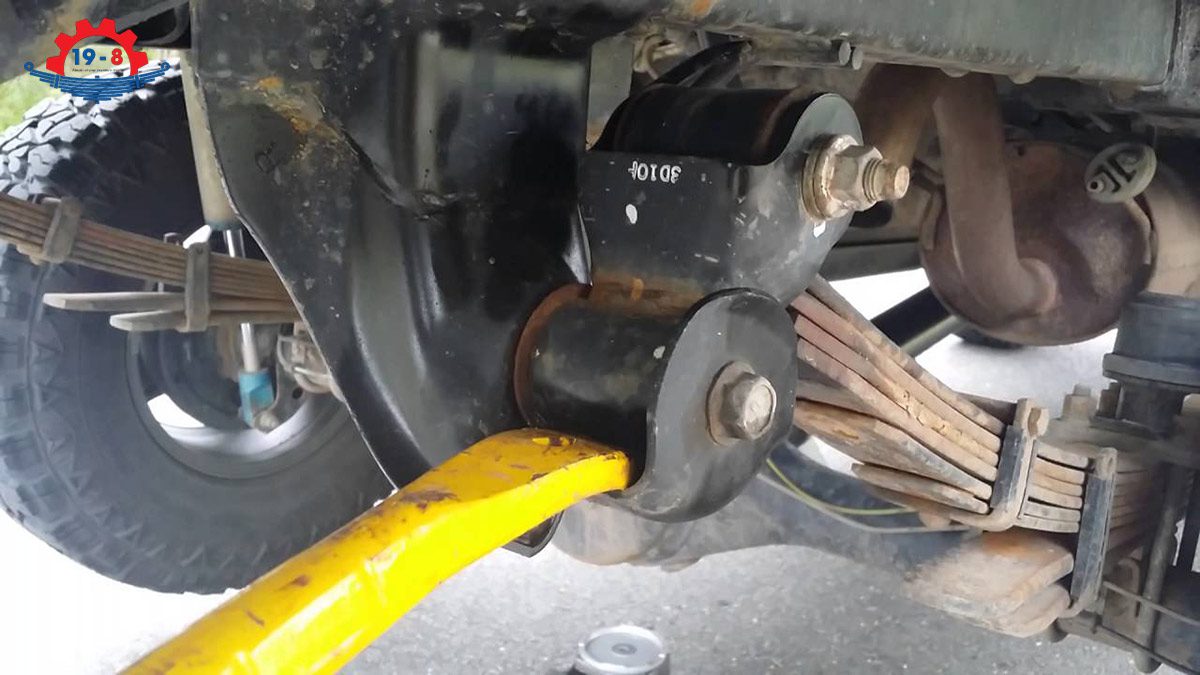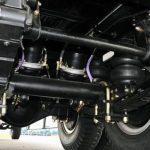One of the pressing questions in the automotive world is, “Does adding leaf springs increase payload?” It’s a topic of interest for truck owners and manufacturers alike, as the answer has implications for vehicle performance, safety, and utility. In this article, we will conduct a comprehensive analysis to unravel the connection between augmenting leaf springs and the potential enhancement in payload capacity.


Understanding Leaf Springs and Payload
Payload capacity is the maximum amount of weight that a vehicle can carry without compromising its performance or safety. It includes the weight of the vehicle itself, the passengers, the cargo, and any attachments such as a trailer hitch. Payload capacity is determined by various factors, such as the engine, transmission, cooling system, brakes, rear axle, frame, and suspension system of the vehicle.
Leaf springs play a vital role in a vehicle’s suspension system, as they support the weight of the vehicle and absorb the impacts from the road. Leaf springs also help keep the body of the vehicle elevated when loaded with passengers and cargo and when pulling a trailer or other attachments. The number, shape, size, and material of the leaf springs affect their load-bearing capacity and performance.
Impact of Adding Leaf Springs on Payload
They can have several effects on its payload capacity and performance. Some of these effects are:
Improved Load Distribution
They can help distribute the load more evenly across the axle and chassis of the vehicle. This can reduce the stress and strain on the suspension system and prevent sagging or bottoming out of the vehicle. Improved load distribution can also improve traction and handling of the vehicle on different road conditions.
Increased Stability
They can also increase the stability of the vehicle by reducing body roll and sway. Body roll is the tendency of the vehicle to lean to one side when turning or cornering. Sway is the tendency of the vehicle to oscillate from side to side when driving at high speeds or when affected by crosswinds or passing vehicles. Adding leaf springs can stiffen the suspension system and resist these movements, resulting in a smoother and safer ride.
Heightened Load-Bearing Capacity
They can also increase the load-bearing capacity of the vehicle by increasing its spring rate. Spring rate is the amount of force required to compress or extend a spring by a certain distance. A higher spring rate means a stiffer spring that can support more weight without deforming or breaking. Adding leaf springs can increase the spring rate by adding more layers or thickness to the existing leaf springs or by replacing them with stronger ones.


Benefits of Increasing Payload Capacity
Increasing payload capacity can have several benefits for different industries and applications. Some of these benefits are:
Enhanced Utility
They can enhance the utility of a vehicle by allowing it to carry more passengers or cargo in one trip. This can be beneficial for industries such as construction, logistics, and agriculture, where transporting heavy materials or equipment is essential. Increasing payload capacity can also enable a vehicle to handle more diverse tasks, such as towing a trailer or plowing snow.
Business Efficiency
They can also improve business efficiency by reducing transportation costs and time. By carrying more load in one trip, a business can save fuel, labor, and maintenance expenses. It can also increase customer satisfaction by delivering goods faster and more reliably.
Versatility
Increasing a vehicle’s payload capacity inherently increases its versatility.
- Diverse Tasks: A vehicle that can handle varied weights can be deployed across multiple tasks, from hauling heavy equipment one day to transporting goods the next.
- Adaptability to Industries: A versatile vehicle can cater to the demands of multiple industries. A truck, for instance, might be used in a construction project and, with minor modifications, be suitable for a delivery job shortly after.
- Asset Utilization: Instead of having multiple specialized vehicles, businesses can optimize the use of fewer vehicles that can handle a range of tasks, leading to better asset utilization and reduced overhead costs.
The benefits reach far beyond just carrying more weight. They touch on various facets of business operations, from cost savings to improved asset utilization and market responsiveness. When utilized effectively, augmented payload can be a transformative factor for businesses across industries.


Does Adding Leaf Springs increase payload? Potential Drawbacks and Considerations
While they can have many advantages, it can also have some drawbacks and considerations that need to be addressed. Some of these are:
Addressing Potential Downsides
They can have some potential downsides, such as a stiffer ride and reduced maneuverability. A stiffer ride means that the vehicle will transmit more vibrations and shocks from the road to the passengers and cargo, resulting in a less comfortable ride. Reduced maneuverability means that the vehicle will have a larger turning radius and slower steering response, making it harder to navigate tight spaces or corners.
Suspension Adjustment
They may require suspension adjustments to ensure optimal performance and safety. Suspension adjustments may include aligning, balancing, or inflating tires; adjusting shock absorbers; lubricating joints; or replacing worn-out parts. Suspension adjustments may also involve installing additional components such as air bags, sway bars, or stabilizers to enhance stability and control.
Impact on Fuel Efficiency
They may also affect fuel efficiency by increasing aerodynamic drag and rolling resistance. Aerodynamic drag is the force that opposes the motion of an object through air. Rolling resistance is the force that opposes the motion of a wheel on a surface. Both forces increase with the weight and size of the vehicle, requiring more fuel to overcome them. Increasing payload capacity may also increase the engine load and reduce the engine efficiency, resulting in higher fuel consumption.


Safety Considerations
Emphasizing Safety
When it comes to adjusting a vehicle’s payload capacity, safety should always be the priority. This involves more than just ensuring the vehicle can handle the added weight. Factors such as vehicle stability, structural integrity, and tire limitations need to be taken into account. Every modification should be made in adherence to automotive safety standards and guidelines. It’s crucial to remember that any modifications not only affect the vehicle and its passengers but also other road users.
Handling and Braking
Modifying a vehicle’s payload directly impacts its handling dynamics. With increased weight, the vehicle’s center of gravity shifts, which can significantly affect its cornering abilities. Turning might become less responsive, and there may be an increased chance of understeer or oversteer, especially on slippery or uneven roads.
Similarly, braking dynamics change when a vehicle is loaded heavily. Heavier loads require longer distances to come to a complete stop. This means braking systems might need upgrades to cope with the added weight, and drivers need to be acutely aware of the increased stopping distances.


In wrapping up our analysis, it’s clear this question isn’t just a simple inquiry but one with layers of engineering and practical implications. As we’ve discovered, augmenting leaf springs can have a notable impact on a vehicle’s payload capacity, but it’s essential to consider various factors to ensure both performance and safety. Whether you’re a vehicle owner or a manufacturer, understanding this relationship is crucial for optimizing vehicle capabilities.





